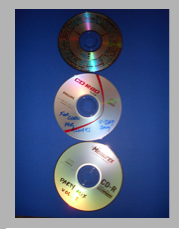
The Background
Guiding Questions
Portfolios, Technologies,
and the Composition Classroom
EPortfolios
Why Portfolios?
Outlining Multimodal Composition
The Cs
Enhanced Writing
Parallel Educational Tools
First Parallel
Second Parallel
Third Parallel
Fourth Parallel
New Directions: Into Infinity
(Expanding Ideas)
Tangent Line 1
Tangent Line 2
Tangent Line 3
Final Reflections
References
In the 1970s, process writing took hold of an emerging composition studies (Murray, 1972; Elbow 1973; Tobin, 2000). As composition studies moved forward, so did modes of assessment and modes of teaching. Today
 ’s first-year composition
classroom looks different from the
classroom of the 1970s. Often, computers can be found in the classroom,
as well as movable chairs and tables; SmartBoards, ELMOs, and
media-podiums are synced to overhead LCD projectors.
’s first-year composition
classroom looks different from the
classroom of the 1970s. Often, computers can be found in the classroom,
as well as movable chairs and tables; SmartBoards, ELMOs, and
media-podiums are synced to overhead LCD projectors.
Discussion boards and blogs engage students in
a writing community where previous decades had seen discussions of
literature and lectures about writing-technique and
organization schema. Along the way, testing and assessment have
changed. Although composition students may still need to take entrance
exams in the form of standardized, multiple choice
questions and timed
writing essays, in the ideal writing classroom, these modes of
assessment are left behind after the first week of the semester—when
diagnostic essays are instituted—for modes that assume students’
authority and ownership.
In writing classrooms where multimodal composition is encouraged and utilized, students might ask, “why are we using blogs?”; “why are we making videos?”; or even “what’s the point of making a video in an English class?” composition instructor persist in bringing technology into the classroom, building bridges to literate practices that students do and will need and use in their personal and professional lives in and outside of academia.
Students are
also asking, “why do I have to revise
so much?”; “why do I have to write a new draft?”; “do these comments
mean I didn’t do well?”; or “why do I have to make a portfolio, and
what am I supposed to have in it?” Perry (1997), too, remembers
speaking to these and similar questions when she first introduced
portfolios into her classroom. The questions have similar
undertones—how their writing is assessed by instructors and the types
of composing they pursue within the confines of the classroom are
curiosities to some students.
With students’ questioning of these practices—and their ultimate ownership, authority, and rhetorical abilities at the crux of praxis and assessment—instructors need to be more explicit about the connections